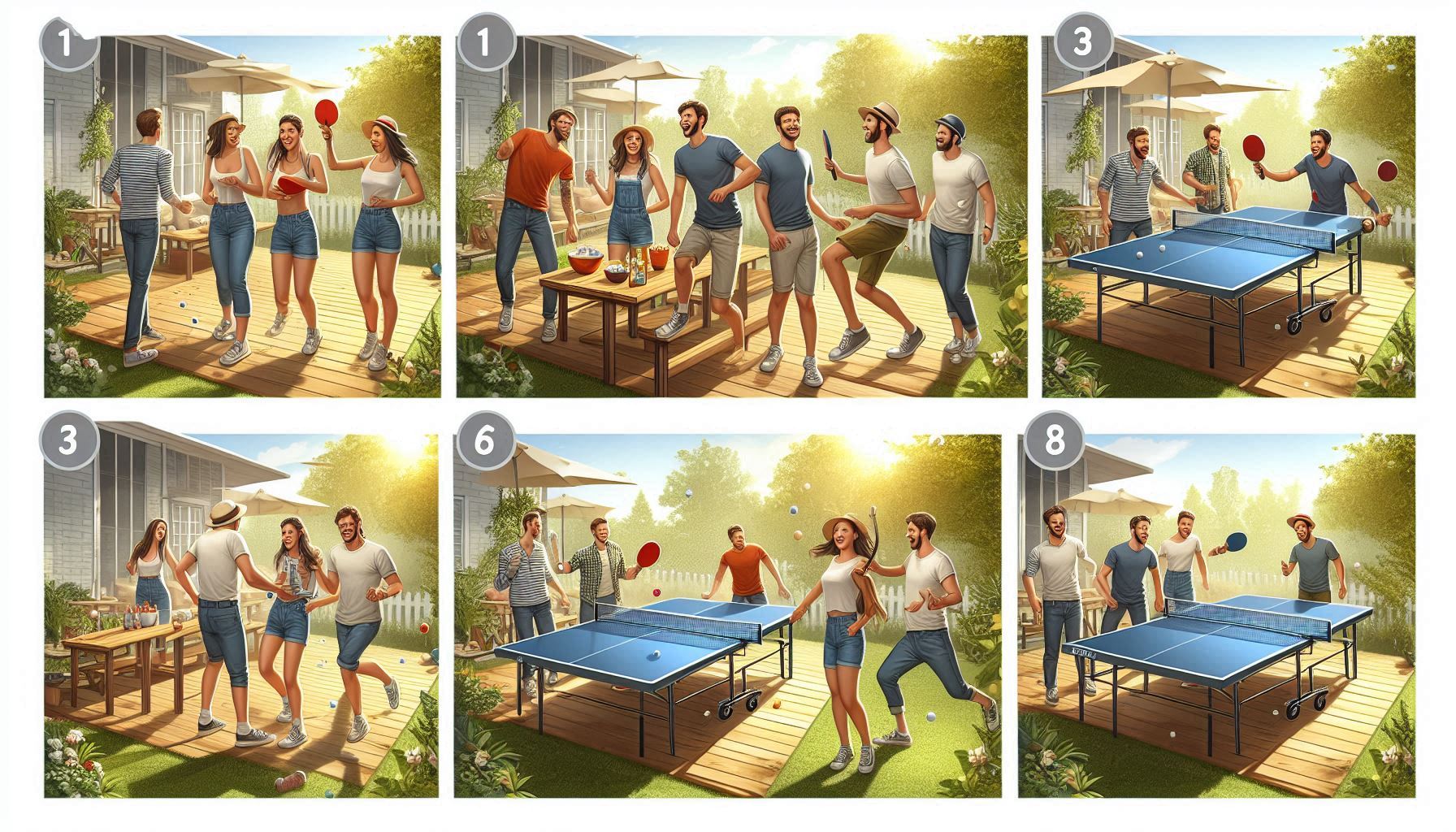
A ping pong table is the centerpiece of countless hours of fun, whether you’re hosting a casual game night or training for competitive play. However, improper setup can lead to uneven bounces, wobbly nets, or even safety hazards. Knowing how to set up a ping pong table correctly ensures a professional-grade experience right in your home, garage, or backyard.
In this guide, we’ll walk you through the entire process—from unboxing to final adjustments—so you can enjoy seamless matches every time. Let’s dive in!
Why Proper Ping Pong Table Setup Matters
Before jumping into assembly, it’s crucial to understand why precision matters:
-
Fair Play: An uneven table or loose net disrupts ball trajectory, skewing game results.

-
Durability: Incorrect assembly strains joints and hinges, shortening the table’s lifespan.
-
Safety: A shaky table risks collapse, especially during intense matches.
Whether you’re setting up an indoor, outdoor, or foldable table, these universal steps apply.
Tools You’ll Need
Most ping pong tables include hardware, but gather these tools beforehand:
-
Screwdriver (Phillips or flathead, depending on the model)
-
Adjustable wrench
-
Level tool
-
Rubber mallet (for gentle adjustments)
-
Assistant (for heavier tables)
Step 1: Unbox and Organize Components
Start by carefully unboxing all parts in a spacious, clutter-free area. Lay out:
-
Tabletop halves (often folded or split into two sections)
-
Leg frames and support beams
-
Net, posts, and clamps
-
Screws, bolts, and washers (check the manual for counts)
Pro Tip: Keep small hardware in a bowl to avoid losing pieces.
Step 2: Assemble the Frame and Legs
-
Attach Legs to the Tabletop: Flip one tabletop half upside-down on a soft surface (e.g., carpet) to prevent scratches. Align the leg frames with pre-drilled holes and secure them using included bolts. Tighten firmly but avoid over-torqueing.
-
Connect Support Beams: Many tables have crossbars or beams to stabilize the legs. Follow the manual’s diagram to bolt these into place.
-
Repeat for the Second Half: Assemble the other tabletop section identically.
Safety Check: Ensure all legs lock securely. For foldable tables, test the hinges to confirm smooth folding.
Step 3: Position and Level the Table
-
Join Both Halves: Move the two halves into their final position, aligning them edge-to-edge. For foldable tables, unfold and lock the center hinge.
-
Check for Gaps: A properly aligned table has no visible space between the halves. Adjust as needed.
-
Level the Surface: Place a level tool on multiple spots (center, corners). If uneven, adjust the legs’ height screws or add shims (e.g., cardboard) under shorter legs.
Outdoor Tip: On grass or uneven patios, use a plywood base for stability.
Step 4: Install the Net and Posts
A taut net is critical for regulation play:
-
Attach Net Clamps: Slide the net’s clamps onto the table edges, 6 inches from the end. Tighten screws to secure.
-
Secure the Posts: Insert vertical posts into the clamps and tighten. Ensure the net’s bottom touches the table surface.
-
Adjust Tension: Most nets have a wheel or string to tighten. The net should stand 6 inches high with no sagging.
Regulation Standard: Per ITTF rules, nets must span 6 feet long and 6 inches high.
Step 5: Final Checks and Adjustments
-
Bounce Test: Drop a ball from 12 inches—it should bounce 8–10 inches high uniformly across the surface.
-
Stability Test: Gently shake the table. If it wobbles, recheck leg bolts or add weight (e.g., sandbags) to the base.
-
Surface Care: Wipe the table with a damp cloth to remove dust or debris affecting ball spin.
Pro Tips for Maintenance
-
Storage: Fold and cover the table when not in use to prevent warping (especially outdoor models).
-
Weatherproofing: For outdoor tables, apply UV-resistant sealant annually.
-
Net Care: Loosen tension when storing to preserve elasticity.
FAQs About Ping Pong Table Setup
Q: How long does it take to set up a ping pong table?
A: Most tables take 30–60 minutes with two people. Complex models may require 90 minutes.
Q: Can one person assemble a ping pong table?
A: Possible for lightweight tables, but two people are safer for aligning and lifting heavy tops.
Q: Why does my ping pong table wobble?
A: Uneven flooring or loose bolts. Recheck leveling and tighten all hardware.
Conclusion
Mastering how to set up a ping pong table ensures every match is fair, fun, and competitive. By following these steps—meticulous assembly, precise leveling, and net adjustments—you’ll create a professional-grade playing surface that lasts for years. Now grab your paddles, practice your spin serves, and let the games begin!







Leave a Reply